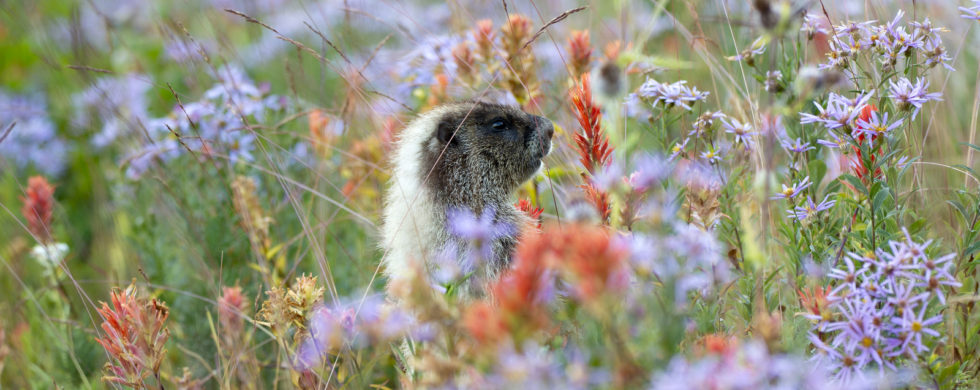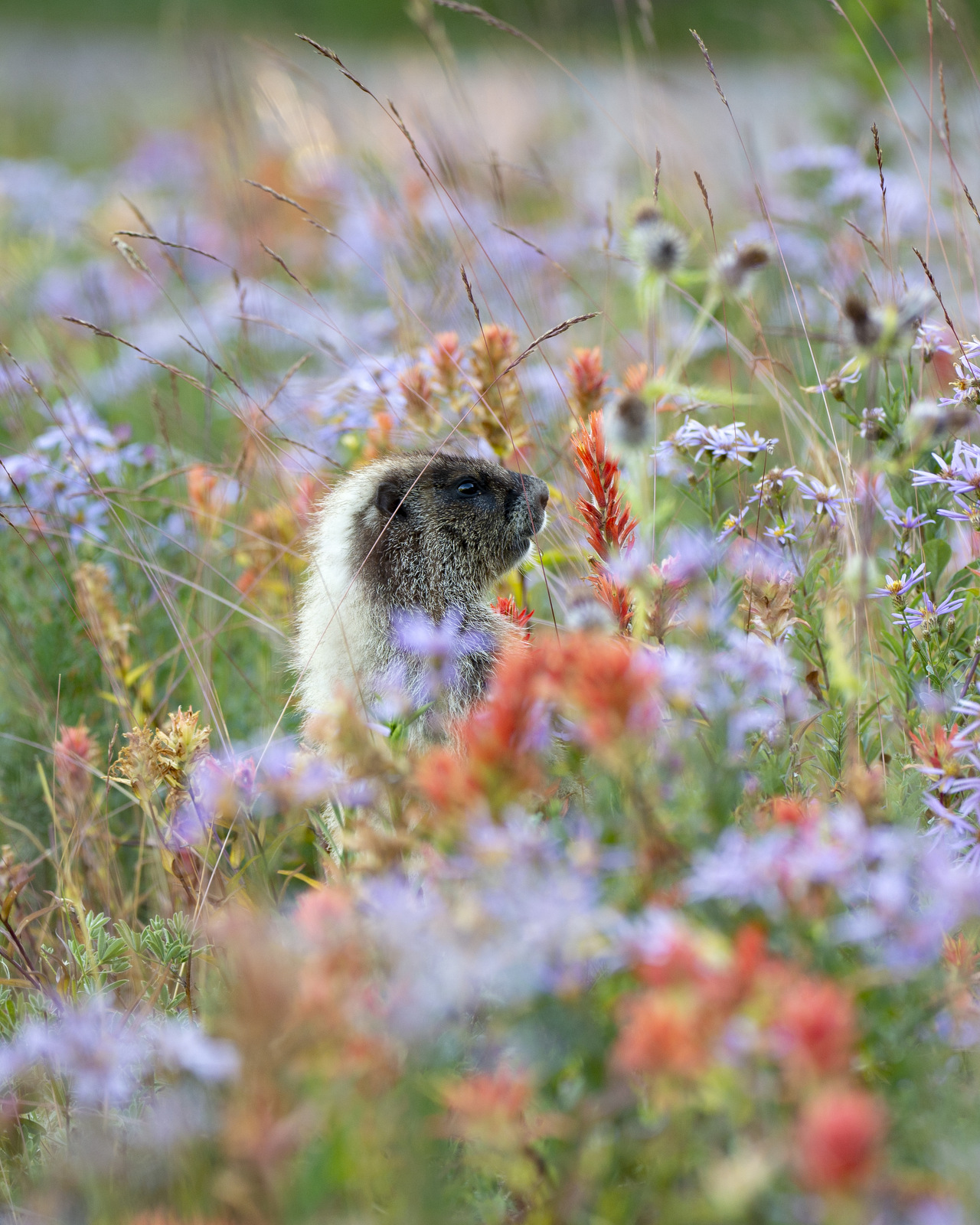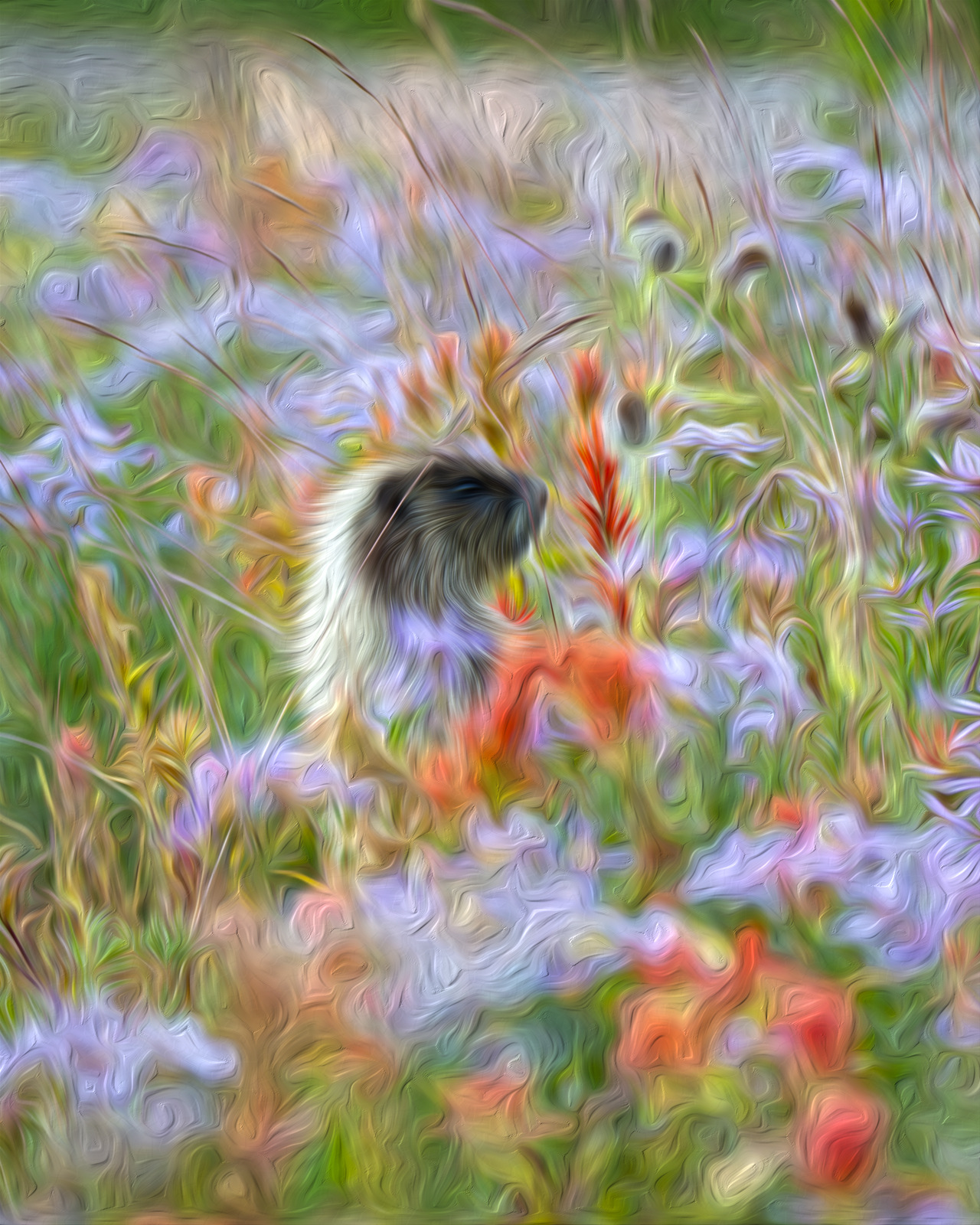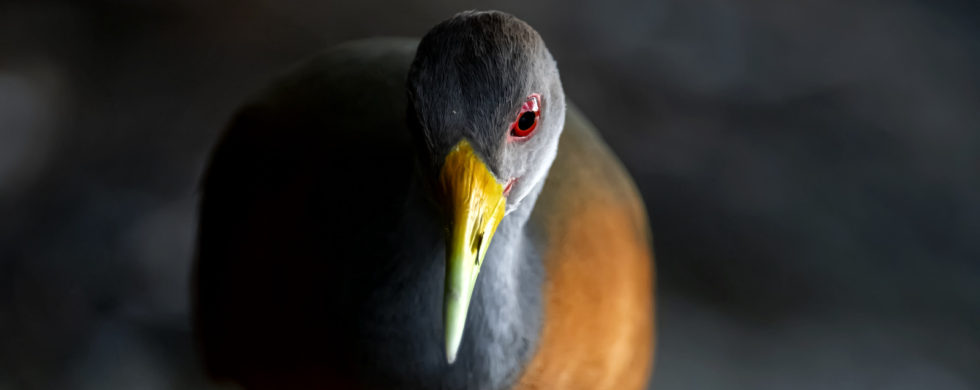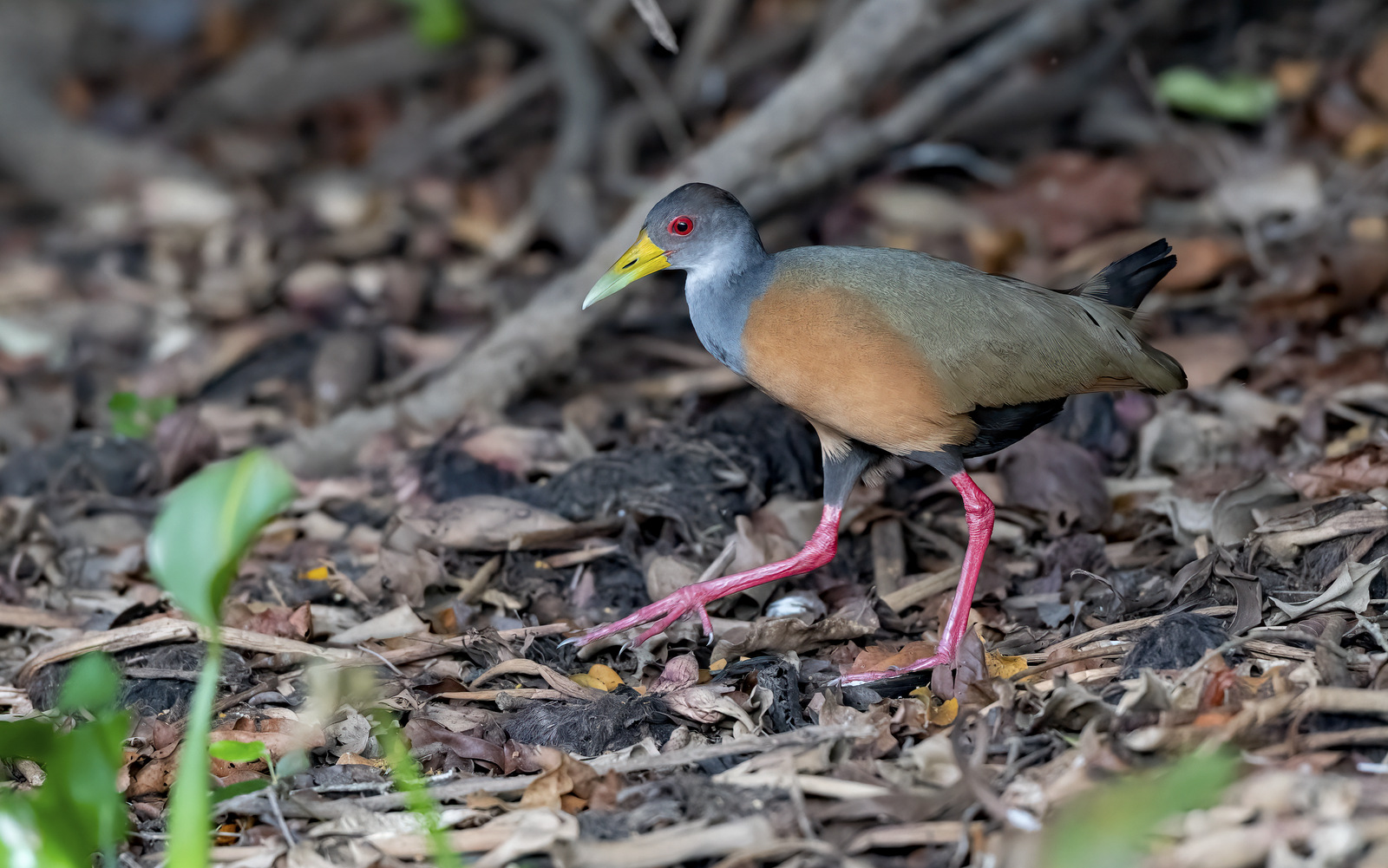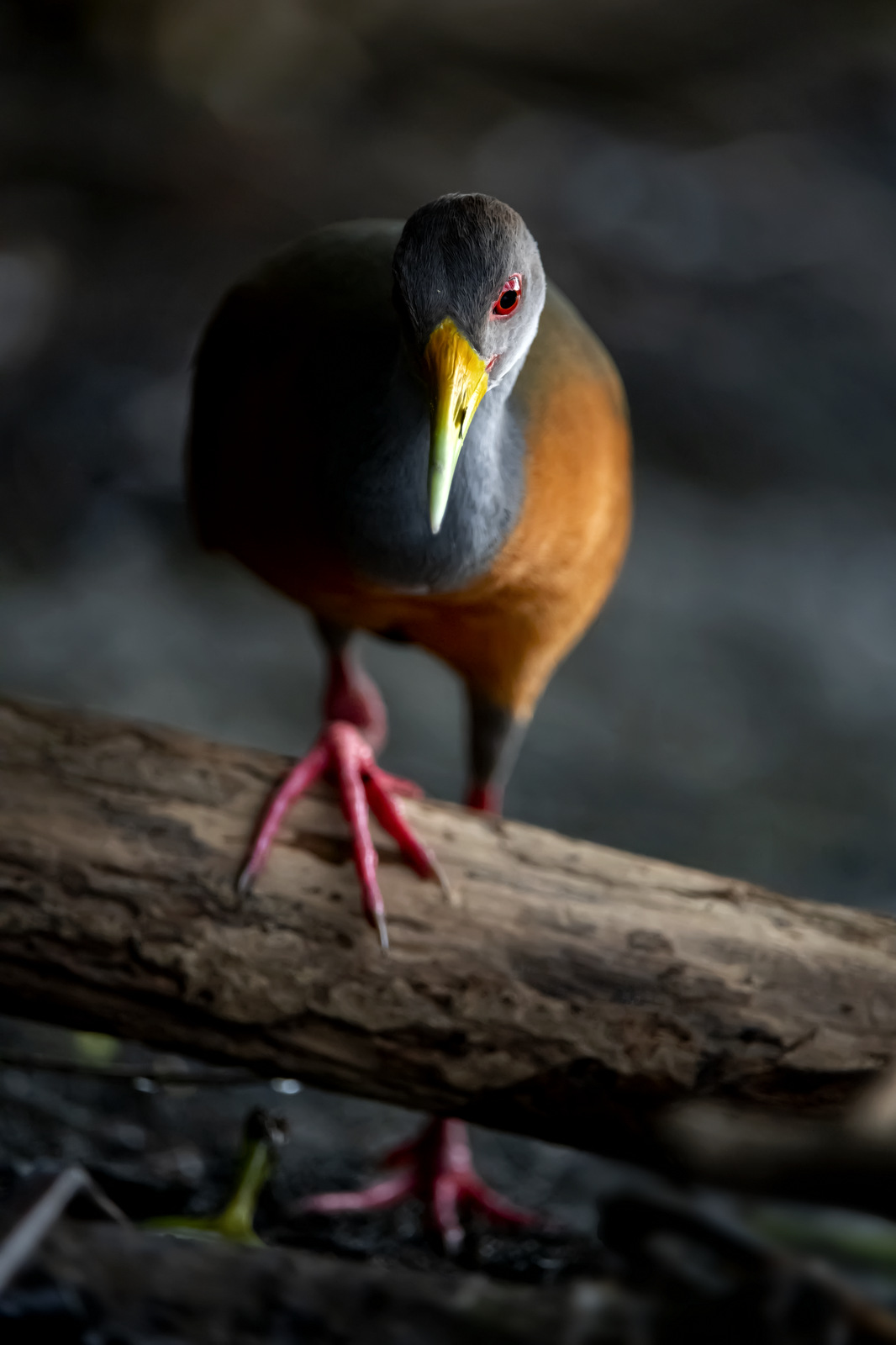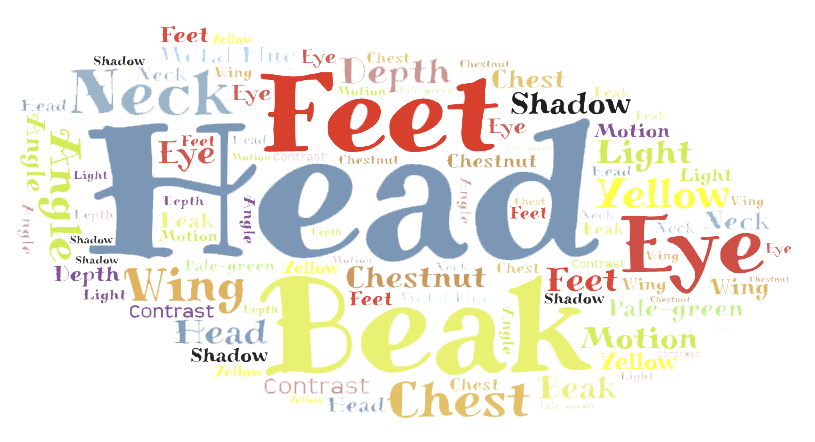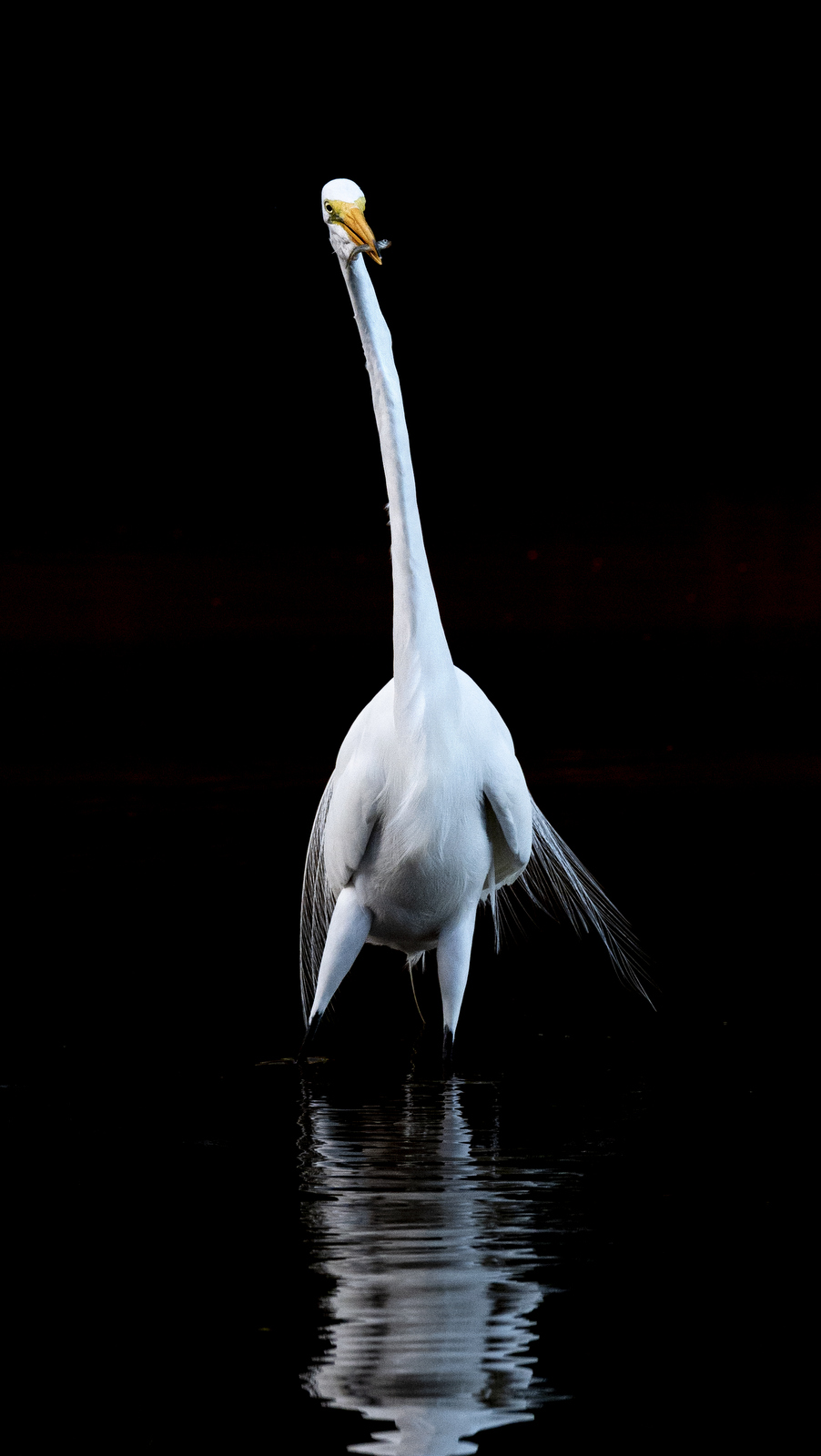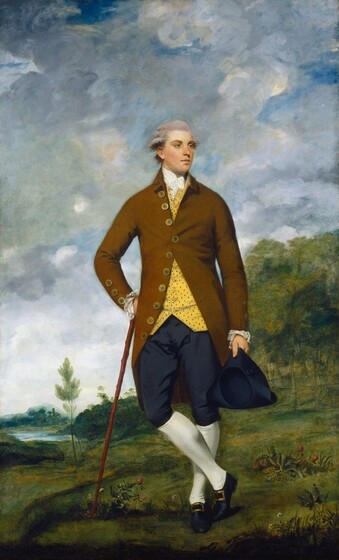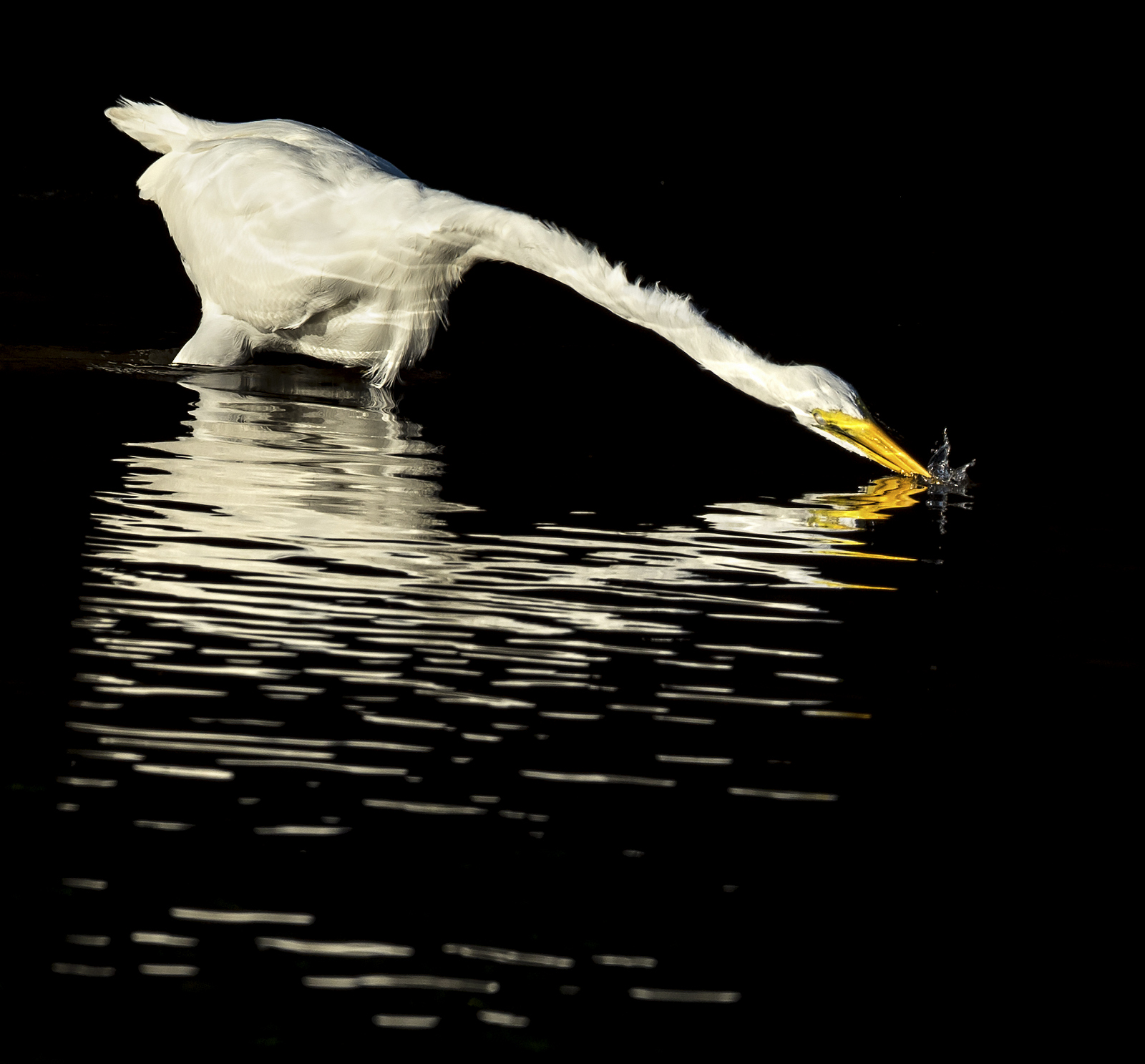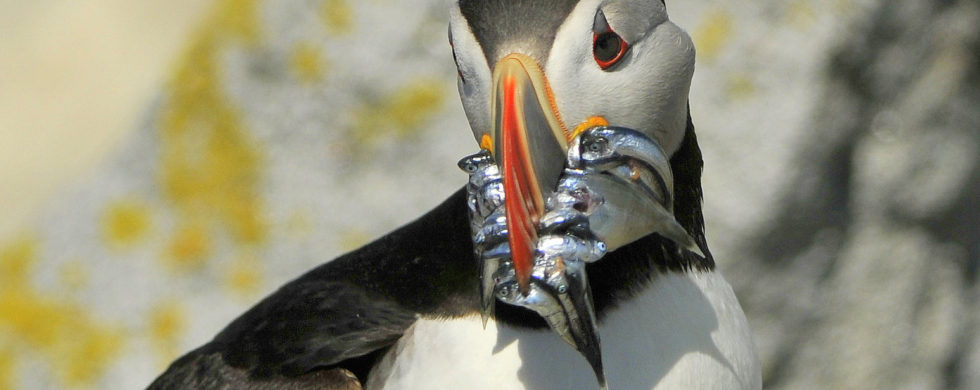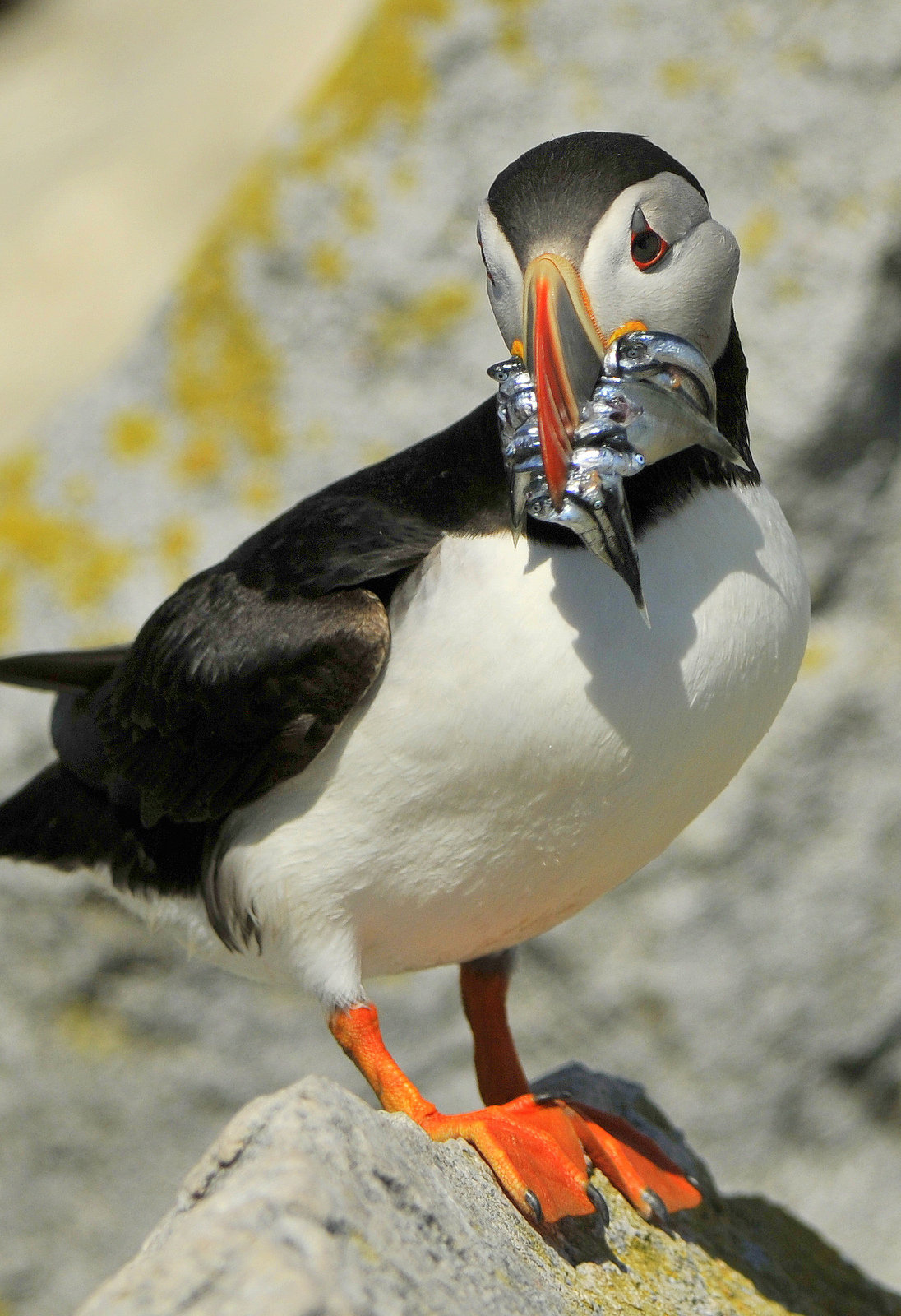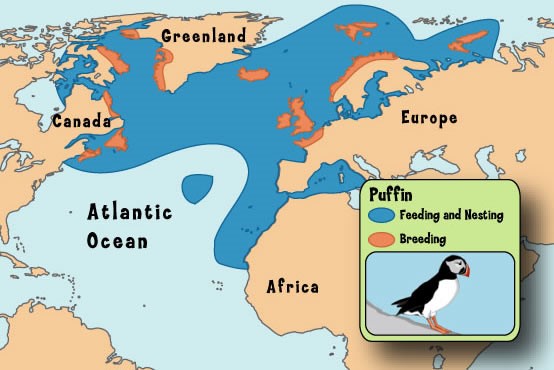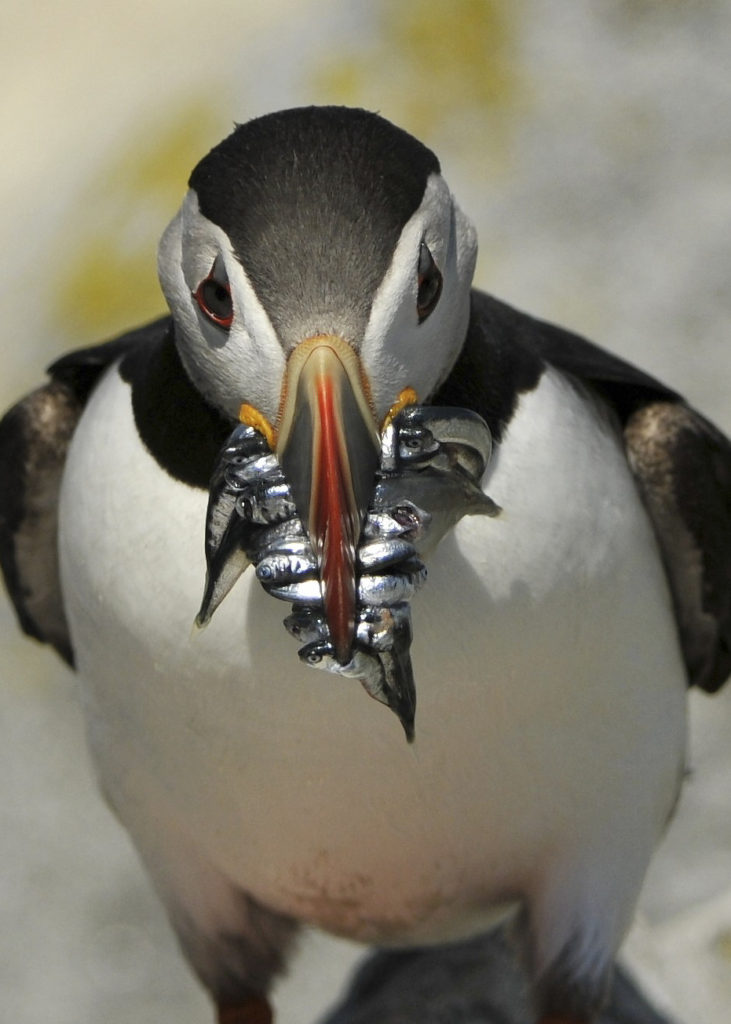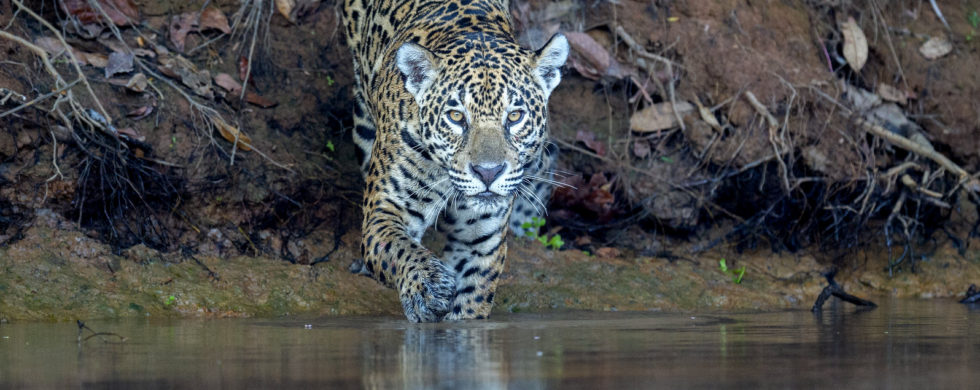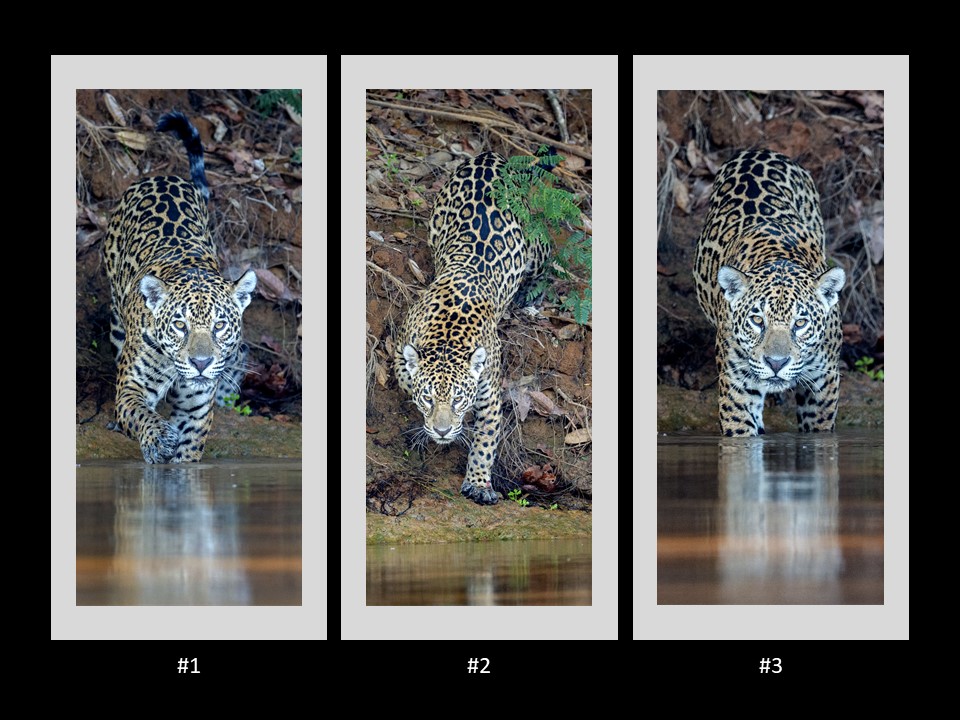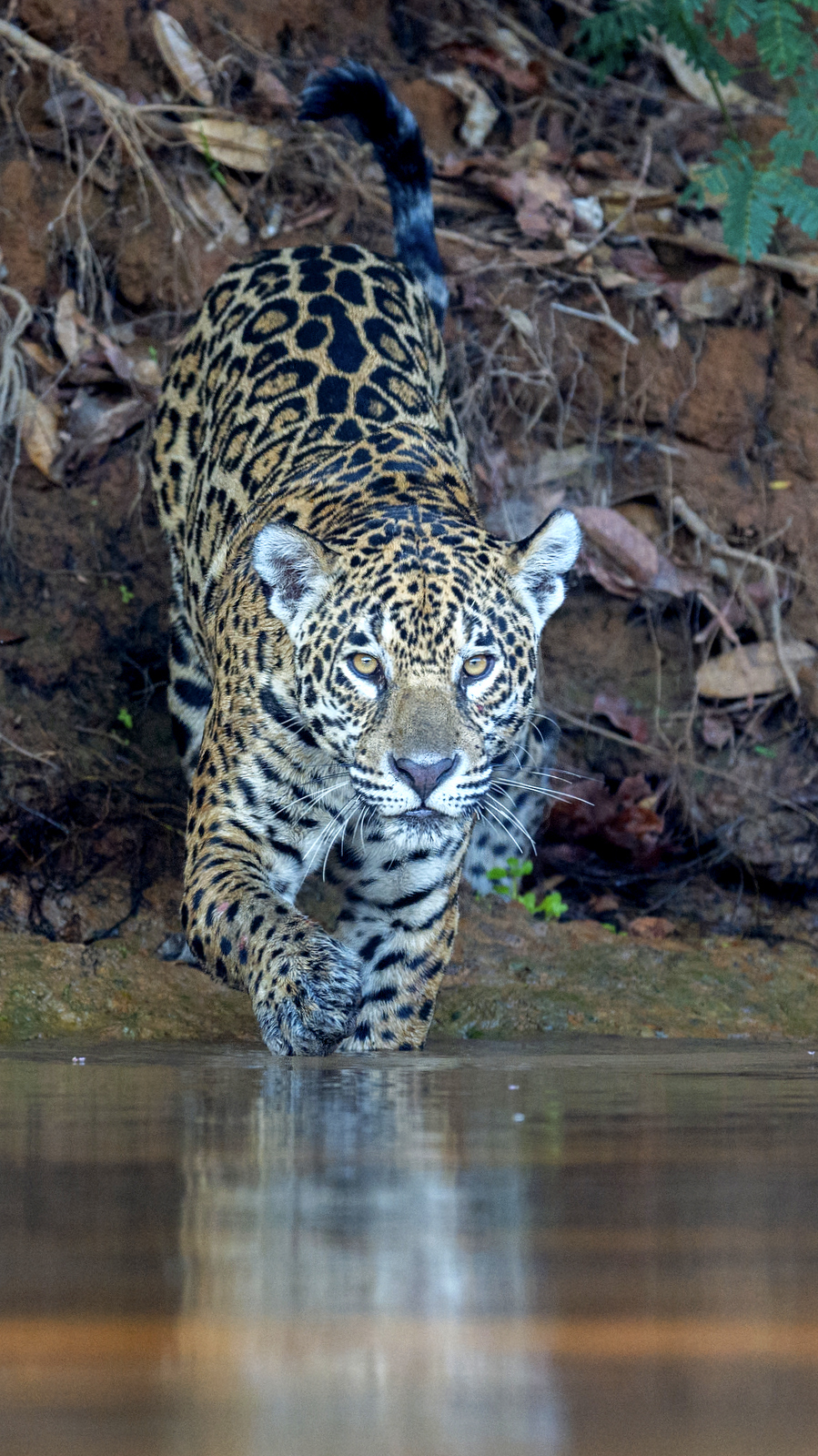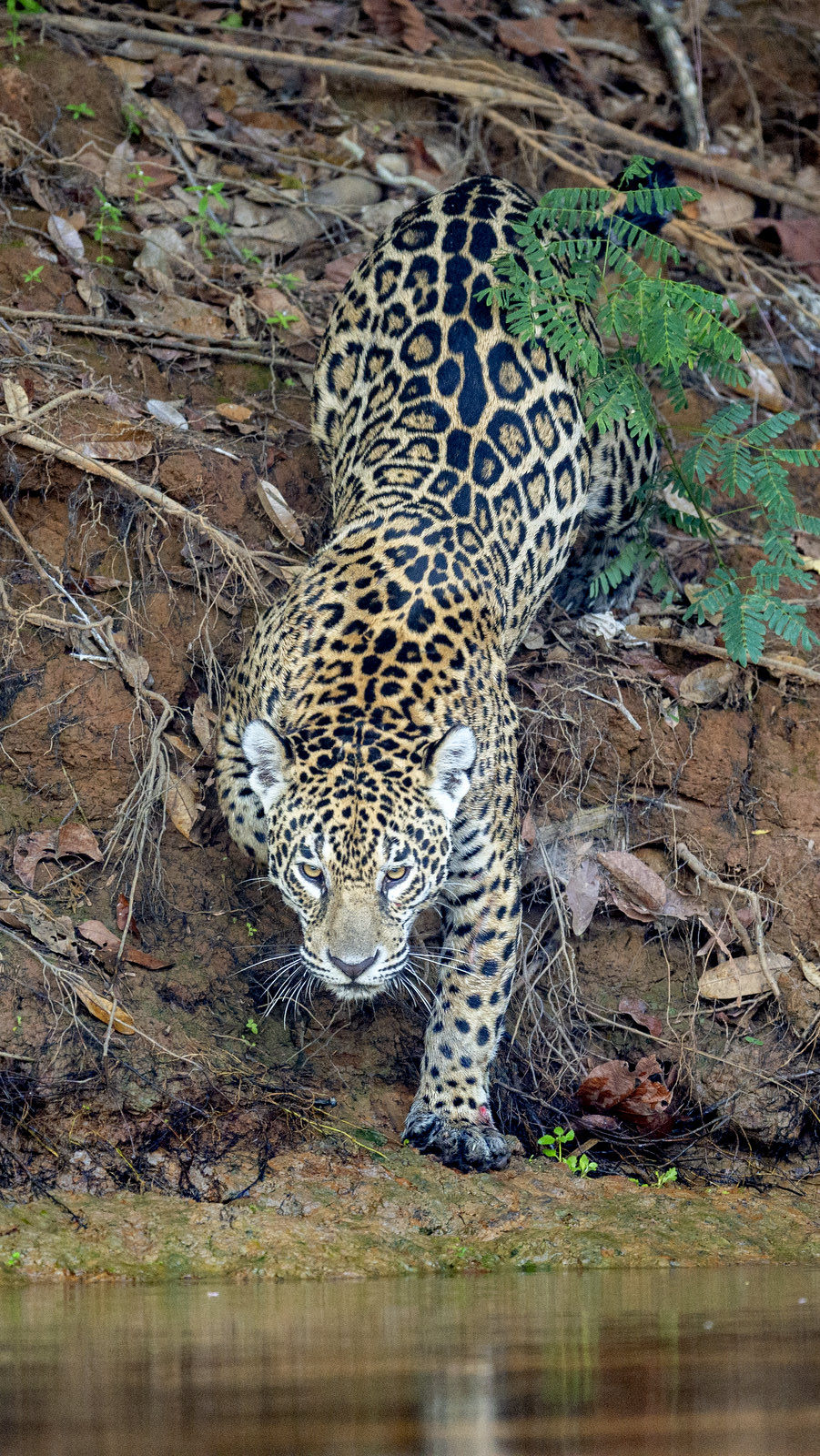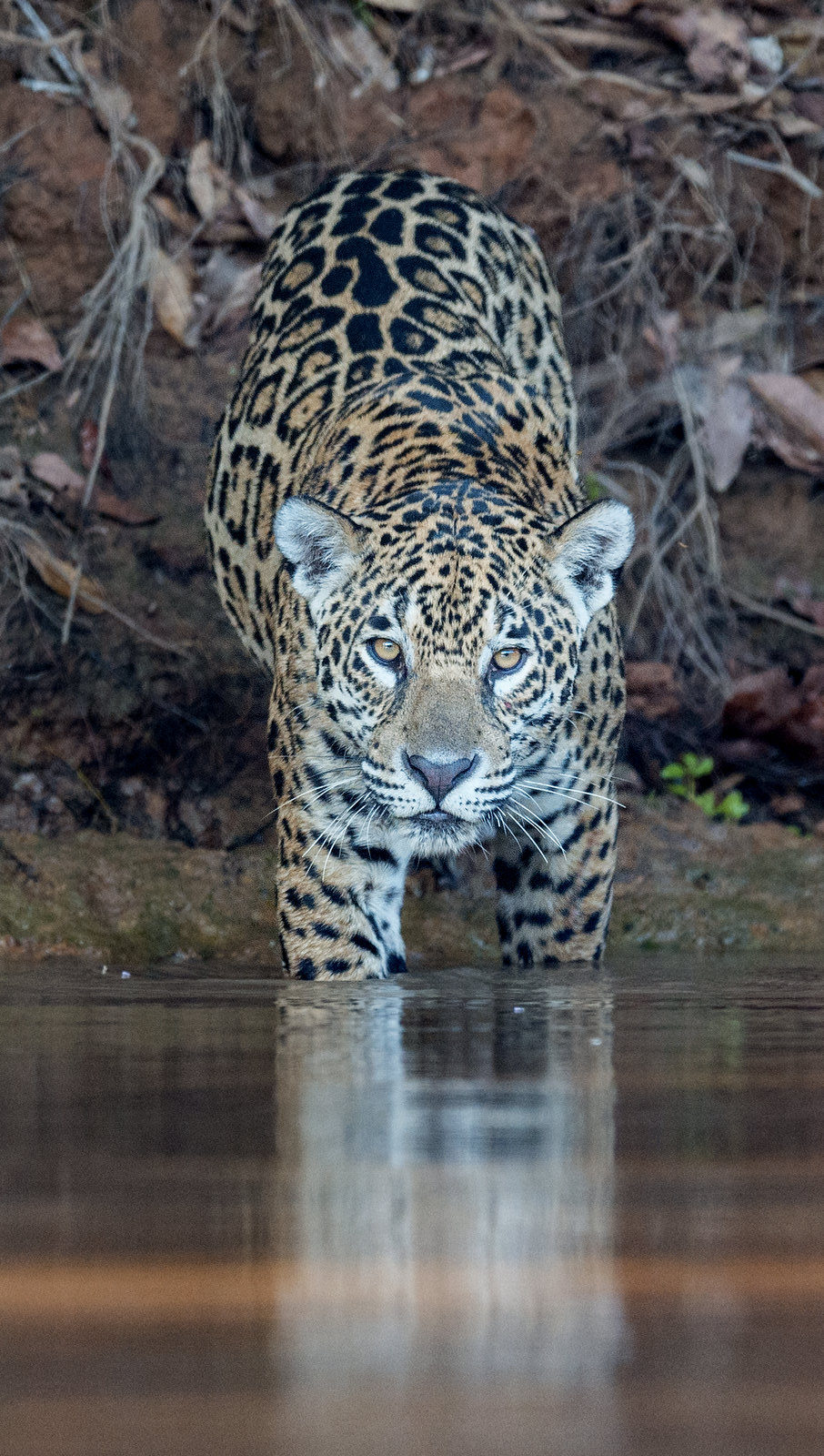26
Shot of the Month – June 2021
In 2020 I spent a weekend at Mt. Rainier in search of wildflowers. Ironically, some of the most intense concentration of flowers, and color, can be found along side the roadway. Of course, this is not really the setting for a “wild” nature image that I am looking for. As I was driving from one hiking site to another I saw a Hoary Marmot along the road near a collection of wild flowers. I have seen marmots dining on wild flowers before as you can read about here.
“Oooh, a marmot in those wildflowers? That could be a great shot!”
Luckily there was a car pullout not far away so I slammed on the brakes and pulled over. I walked back along the road to the small “field” and tried to photograph the marmot. From time to time he would stand up and nibble on a flower. As the marmot scampered about I was ducking and dodging trying to
- find a clear shot;
- with lots of color;
- without showing the road nearby;
- without getting hit by a passing car.
The best way to not have the road in the image is to shoot from the road — tricky with cars zooming by. Where is the marmot? Ahh, ok. Click, Click. Take eye from camera view finder and scan the road. Any cars? Yep. Yikes, get off the road.
Ok, now where is the damn marmot? Reposition. Click, click…..Yikes, another car…
This game of hide and seek and dodge-the-car went on for a few stressful minutes. In the end the image above is the only one that kind of worked. The marmot eventually scampered off to flowers down the hillside before I could get THE shot.. The image is a bit of a mess but the photo does offer a nice impressionist sense of the glorious colors that can cover the mountainside for a few weeks each year. With a bit of software I added to the Monet-esque effect:
Mother nature does some of her finest work in the darndest places….
Until next month…..m
Nikon D4S, Sigma 150-600mm (@ 230mm), f/5.3, 1/125 sec, ISO 560

